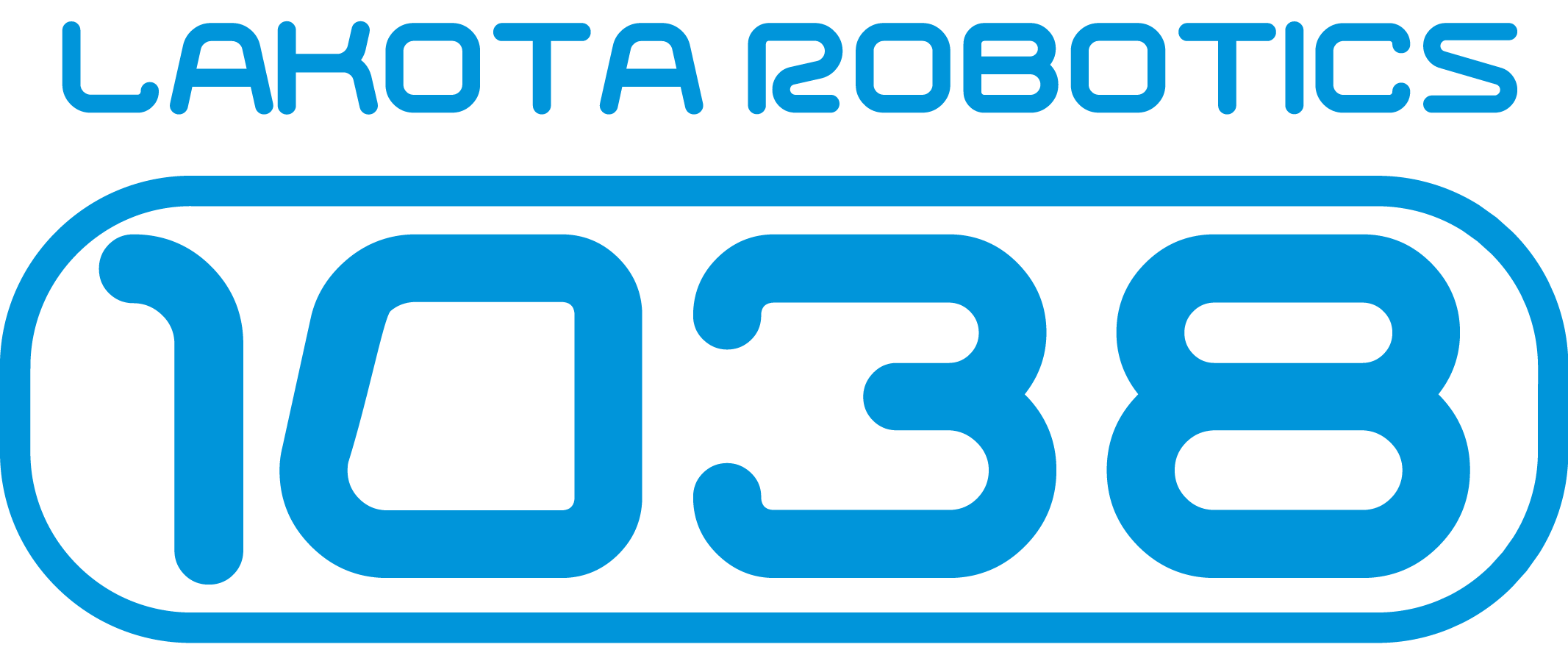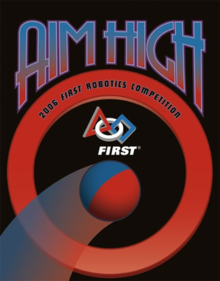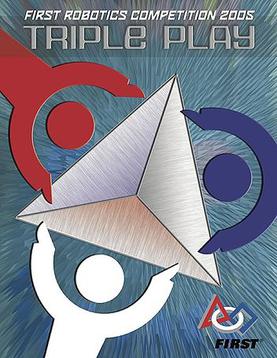2006 Game: Aim High
Lakota Robotics | Game Announcements
2006 Game: Aim High
Robot Name: Stormin’ Norman
In honor of: Norm Reiboldt

Game description
Aim High is played by two alliances, red and blue, each consisting of three robots. During a 10-second autonomous mode robots are programmed to score into any of the three goals: one raised center goal marked by a green vision target and two corner goals at floor level. At the end of the autonomous period the alliance with the most points will gain a 10-point bonus and will be placed on defense for round two. Rounds two, three and four are each 40 seconds long and are human-controlled rounds. Between rounds two and three the alliances switch from offense to defense or vice versa. At the start of round 4 any alliance can score into the corresponding goals. At the end of the match any alliance can receive bonus points by placing its three robots on a platform below the center goal. The alliance with the most points wins with scoring as follows: 3 points for any ball scored in the center goal, 1 point for any ball scored in the corner goals, 10 bonus points for scoring the highest in the autonomous round and 25 points for placing all 3 robots on the platform at the end (10 points for 2 robots and 5 points for 1 robot).
Field layout
The Aim High field has 6 goals and 2 platforms. Unlike previous years an alliance’s goals are on the far side of the field. The field is flat and measures 54 feet (16 m) long by 26 feet (7.9 m) wide.
Alliance station
The alliance station wall is 26 ft (8 m) long and stretches the width of the field. The middle 18 ft (5 m) of the alliance station wall is made of “diamond plate” aluminum from the floor to 3 ft (1 m) high with clear acrylic filling the rest of the 3.5 ft (1.1 m). The outer edges of the wall consist of transparent polycarbonate. Above each alliance station there is a circular goal (the center goal), with a green light above it. The green light is used so that the CMUcam can lock onto it. On the bottom left and right of each alliance station there are two rectangular holes, the corner goals, through which balls can be maneuvered to receive points. In front of each alliance station there is a raised platform.
Tournament structure
The tournament structure of this competition is the same as in previous years. In the regional competitions teams were given access to their robots on the Thursday of the competition weekend. It is a practice day giving each team a number of practice rounds on the regulation playing field. Friday and the morning of Saturday is dedicated to a series of qualification rounds. Each team competed in around seven to ten matches. The number of wins by a team in these matches determines the team’s ranking.
Before a lunch break on Saturday the top eight teams from the qualification rounds are asked, in order from the top-seeded team to the eighth seed, to select an alliance of three robots. In contrast to previous years this order reverses for the second selection round and the eighth seed picks first and then backwards to the first seed. This was instituted to make the finals more competitive and balanced compared to previous years.
After the lunch break the finals take place. This is a standard-elimination tournament bracket starting with alliance 1 facing alliance 8, alliance 2 facing alliance 7, and so on. At the end of the finals the last remaining alliance is declared the winner and all three teams are given the right to attend the national competition.




